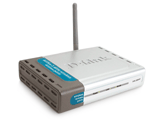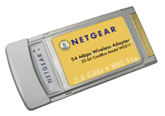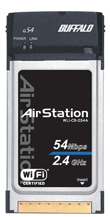Two months ago, the Standards Board of the Institute of Electrical and Electronics Engineers issued its final standard for 802.11g wireless networks, which adds speed and a layer of security to WiFi devices.[IMGCAP(2)]Less than a month later, the WiFi Alliance, the trade group that certifies 802.11 products, announced that it had certified its first eight products'four access points and four PC Cards from six vendors'all in compliance with the new standard.The question seems to be, does this solve or complicate the wireless puzzle for government users?To see where 802.11g fits into the picture, we first need to take a look at the other 802.11 standards on which it is based.In 1997, IEEE introduced the 802.11 family of wireless LAN standards, all versions of which use the Ethernet protocol together with the carrier-sense multiple access with collision detection method of allowing multiple devices to share the same frequency.The original 802.11 operated on the 2.4-GHz band with a transmission speed of 1 to 2 Mbps. Two years later came the 802.11a and 802.11b standards. The latter, also called WiFi, is an enhanced version of the original standard that uses the same frequency and a complimentary modulation method. This allowed 11 and 11b devices to operate on the same network while boosting the transmission rates to a potential 11 Mbps.The 802.11a standard, on the other hand, is not compatible with the original standard. It operates on a higher frequency, at 5 GHz, and uses a different modulation method'orthogonal frequency-division multiplexing'which raises the transmission rate to 54 Mbps.Keep in mind that these transmission rates are theoretical; they don't translate directly into performance. For examples of 802.11a network access cards tested by the GCN Lab, go to www.gcn.com and enter 144 in the GCN.com/search box.To begin with, there is the system overhead, which reduces the amount of bandwidth available for actual data transmission. The other key element is signal strength. The farther away the user is from the transmitter, or access point, the weaker the signal and the slower the data transfer. Walls, windows, desks, water pipes, air ducts and even human bodies all act to further attenuate the signal and drop the transfer rate more rapidly than if the user and access point are outdoors.[IMGCAP(3)]In addition to speed, there are other significant differences between the two standards. WiFi'that is, 11b'can be transmitted over greater distances than 11a. On the downside, it shares the 2.4-GHz band with other devices, such as microwaves, and so is subject to interference from them. Meanwhile, 11a has more active channels to choose from than 11b.While 802.11a and 11b are distinct standards, 11g is simply a beefed-up version of 11b and shares the same advantages and disadvantages.It has a higher potential data transmission speed, the same 54 Mbps as 11a. Since they are compatible, both 11b and 11g devices can operate simultaneously on an 11g network. But when this happens, all devices cut back to 11b's slower transmission rate. Security features are likewise identical, because both use the WiFi Alliance's WiFi Protected Access standard.'There is no difference in security, since it is part of the 802.11 scheme,' said Stan Schatt, vice president and research leader for Forrester Research Inc. of Cambridge, Mass.'WPA is the latest and greatest security associated with 11g while we wait for 802.11i,' yet another standard expected to be finalized by the end of the year.According to Gartner Inc. of Stamford, Conn., the overall market for wireless LAN devices last year topped $2 billion with nearly 20 million units sold. The number of units sold was up 120 percent over 2001 but, due to a drop in prices, the revenue only increased by 29 percent.Dell'Oro Group of Redwood City, Calif., reported that this trend continued in the first three months of this year, with the number of units shipped climbing by 6 percent over the previous quarter, but the revenue only showing a 1 percent growth.Although the 11g standard was just finalized this summer, products have been on the market since last year and make up a significant portion of sales. Dell'Oro reported that 29 percent of small office and home office wireless LAN revenue was for 11g devices.There were problems reported with these early units, however, in terms of interoperability among devices from different manufacturers, as well as networks cutting back to 11b speeds even when no 11b devices were logged on. This prompted most analysts to advise waiting for the final standard and even then only going with WiFi-certified products.'The major differences in wireless products are in software, including ease of configuration, security features and manageability features,' Schatt said. 'There are also going to be differences in terms of which operating systems are supported by the radio cards and which interfaces will be provided by the personal digital assistants' and other devices.With the standard now released, and assuming you are purchasing certified equipment, any vendor can provide basic 11g service. You should be able to mix products from different vendors and have them work well together. The distinction between vendors, however, lies in the manageability of the devices.'Once the products are certified they are pretty much interchangeable,' said Gartner vice president Ken Dulaney. 'The difference is if you need an enterprise-class product'in which case you would go with a company like 3Com, Cisco or Nortel'or a consumer product.'So, if you are looking to outfit a small government office with a locally administered network, the consumer products will likely be fine. If, on the other hand, you need to centrally manage these devices and integrate with enterprise-class authentication and security systems, you need to go with the higher-end devices.There's a problem, though, if you are looking at deploying 11g right now. Many products are available in the small-office market, but Cisco Systems Inc., for example, does not yet support 11g as part of its wireless lineups, though it is planning to do so.[IMGCAP(4)]Once the full set of enterprise 11g devices becomes available toward the end of the year, they can be deployed at large government sites. The price difference between 11b and 11g devices will likely narrow over the next year, so there will be no financial advantage to using 11b, and those devices will probably disappear from the market. Nevertheless, analysts say, the standard is not ideal for enterprise deployments and might not be necessary for small offices.'11g will be more useful to some degree in homes and in businesses where you can control the environment and make sure it is all 11g,' Dulaney said. 'But unless you are regularly transferring large files inside the house, it is not that useful, since what is going outside the house is a digital subscriber line or cable connection operating at a couple hundred kilobits per second.'Instead, 11a is generally the better choice because it has the higher transmission rates, more channels and less interference.'We recommend that if you want faster speeds, go with 11a, but do so toward the end of the year or early next year because there are still maturity issues with it,' Dulaney said.But there is a glitch there, too. The 11b standard was out before 11a and got the jump in terms of installed user base. Last year, 13 million 11b adapters were sold, compared with only 451,000 11a units. Although 11a is the future of wireless LANs, for now it means having to deal with the two competing, incompatible standards.Unless you can restrict the network to only 11a clients, and your employees don't need to log onto 11b networks out in the field, this means purchasing dual-band 11a/b/g access points and interface cards and supporting both standards.
Proxim's Orinoco AP-600 access point provides 802.11b and 802.11g service, with RADIUS access control. It's priced at $330.
The $119 AirPlus Xtreme G DWL-2000AP from D-Link Systems includes a Dynamic Host Configuration Protocol server.
Netgear's WG511 PC Card, priced at $59, includes a wireless LAN manager.
Buffalo Technology's $59 AirStation notebook adapter has an internal antenna but can work with an external antenna.










